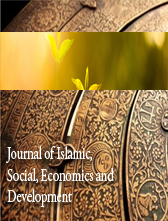HOW CORPORATE GOVERNANCE MECHANISMS RESTRAIN SULFUR DIOXIDE EMISSIONS: EVIDENCE FROM CHINESE LISTED FIRMS
Abstract
There has been a noticeable and widespread trend toward a decrease in corporate environmental emissions. Thus far, the majority of these initiatives have prioritized carbon dioxide (SO2) over sulfur dioxide (SO2). The media's growing focus on SO2 and the rising number of acid rain episodes in various parts of China have raised awareness of the issue among Chinese citizens. This study looks at a number of corporate governance mechanisms and assessed elements that work well to lower corporate SO2 emissions. Regression analysis was conducted using panel data analysis and the Pooled Ordinary Least Square (OLS) approach. Based on a sample of 381 Chinese listed companies in various industries, the results confirmed several conjectures on the connections between corporate governance practices and SO2 emissions. The findings also offer fresh perspectives on SO2 emissions, a dangerous and harmful industrial pollutant, and the corporate governance mechanism framework. Additionally, the goal of this study is to provide some corporate-level insights so that relevant parties, such as managers, investors, and regulators, could monitor, manage, and limit this dangerous emission. Furthermore, the theoretical framework and prospective research agenda were discussed.













